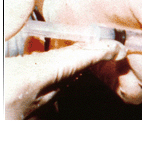Click here to go back.
REPLACING ANIMALS IN DRUG TESTING
By utilizing animal replacement methods, which are typically progressive and pass rigorous screening processes, we gain accurate insight into drug safety and value. Abandoning animal experiments will provide valid information, thus saving animals and humans from harm.
Biochemistry studies cellular functions to establish how they aid or hinder disease progression. This information determines what types of chemicals are needed to assist the human body in resisting a disease or developing a symptom. By analyzing human cell structures and functions in a controlled environment, researchers can make accurate predictions and discoveries.
In vitro research is a vital tool in medical and scientific research. By focusing on human cells, tissue and organs in a controlled and relevant environment, researchers can predict a chemical’s effect on a human body.
Genetic research has helped researchers understand why patients respond differently to medications.
Pharmacokinetic research explores the genetic discrepancies that make some of us more tolerant, resistant or susceptible to particular chemicals. Researchers have already revealed over 6,000 genes that are involved in drug pathways, helping them establish which drugs will work best and most safely in which patients.
Computer and mathematical models can identify beneficial and harmful characteristics of a medication. This is an accurate way to predict a drug’s potential effects on humans.
All prescription drugs have gone through animal testing, but as the above examples reveal, adverse reactions are only discovered when humans take the medications. Once an experimental drug has passed animal tests, it then must pass human clinical studies before being released. Clinical research can be an accurate, valid research tool in determining a drug’s efficacy and potential side effects. Unfortunately, clinical trials are currently not afforded the time and resources needed for a comprehensive study, so many adverse reactions are not noticed until after the study is over and the drug is on the market.
According to the FDA, “Most new drugs are approved with an average of 1,500 patient exposures and usually for only relatively short periods of time.” These medications go on to be used by millions of patients. By incorporating extended and well-populated clinical trials of experimental drugs that have already successfully passed human-based test methods, potential adverse reactions and efficacy can be accurately and quickly determined.
Post-marketing drug surveillance is the system by which patients taking prescription drugs report any and all side effects, as do the doctors prescribing the medications. By implementing and enforcing such an extensive system, adverse reactions would be known sooner, and secondary uses for medications can be discovered.







